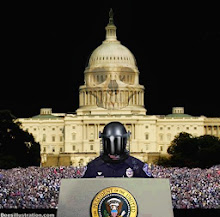Although officially condemned by Washington, these covert ISI operations were undertaken with the tacit approval of the U.S. government. Coinciding with the 1989 Geneva Peace Agreement and the Soviet withdrawal from Afghanistan, the ISI was instrumental in the creation of the militant Jammu and Kashmir Hizbul Mujahideen (JKHM). (See K. Subrahmanyam, “Pakistan is Pursuing Asian Goals”, India Abroad, 3 November 1950).
In the immediate wake of 9/11, the December 2001 terrorist attacks on the Indian Parliament — which contributed to pushing India and Pakistan to the brink of war — were conducted by two Pakistan-based rebel groups, Lashkar-e-Taiba, (Army of the Pure) and Jaish-e-Muhammad (Army of Mohammed), both of which are covertly supported by Pakistan’s ISI. (Council on Foreign Relations, “Terrorism: Questions and Answers, Harakat ul-Mujahideen, Lashkar-e-Taiba, Jaish-e-Muhammad”, http://www.terrorismanswers.com/groups/harakat2.html, Washington 2002.Note: This report is no longer available on the CFR website.)
The timely attack on the Indian Parliament, followed by the ethnic riots in Gujarat in early 2002, were the culmination of a process initiated in the 1980s, financed by drug money and abetted by Pakistan’s military intelligence.
Needless to say, these ISI-supported terrorist attacks serve the geopolitical interests of the U.S. The powerful Council on Foreign Relations (CFR), which plays a behind-the-scenes role in the formulation of U.S. foreign policy, confirms that the Lashkar and Jaish rebel groups are supported by the ISI.
Through its Inter-Service Intelligence Agency (ISI), Pakistan has provided funding, arms, training facilities, and aid in crossing borders to Lashkar and Jaish. This assistance — an attempt to replicate in Kashmir the international Islamist brigade’s “holy war” against the Soviet Union in Afghanistan — helped introduce radical Islam into the long-standing conflict over the fate of Kashmir. …
Have these groups received funding from sources other than the Pakistani government?
Yes. Members of the Pakistani and Kashmiri communities in England send millions of dollars a year, and Wahabi sympathizers in the Persian Gulf also provide support.
Do Islamist terrorists in Kashmir have ties to Al-Qaeda?
Yes. In 1998, the leader of Harakat, Farooq Kashmiri Khalil, signed Osama bin Laden’s declaration calling for attacks on Americans, including civilians, and their allies. Bin Laden is also suspected of funding Jaish, according to U.S. and Indian officials. And Maulana Massoud Azhar, who founded Jaish, travelled to Afghanistan several times to meet bin Laden.
Where were these Islamist militants trained?
Many were given ideological training in the same madrasahs, or Muslim seminaries, that taught the Taliban and foreign fighters in Afghanistan. They received military training at camps in Afghanistan or in villages in Pakistan-controlled Kashmir. Extremist groups have recently opened several new madrasas in Azad Kashmir.
(Council on Foreign Relations, “Terrorism: Questions and Answers, Harakat ul-Mujahideen, Lashkar-e-Taiba, Jaish-e-Muhammad”,
http://www.terrorismanswers.com/groups/harakat2.html,
Washington 2002. This text was removed from the CFR website in 2006)
What the Council on Foreign Relations (CFR) fails to acknowledge are the links between the ISI and the CIA and the fact that the “international Islamic brigades” were a creation of the CIA.
U.S.-Sponsored Insurgencies in China
Also of significance in understanding America’s “War on Terrorism” is the existence of ISI-supported Islamic insurgencies on China’s Western border with Afghanistan and Pakistan. In fact, several of the Islamic movements in the Muslim republics of the former Soviet Union are integrated with the Turkestan and Uigur movements in China’s Xinjiang-Uigur autonomous region.
These separatist groups — which include the East Turkestan Terrorist Force, the Islamic Reformist Party, the East Turkestan National Unity Alliance, the Uigur Liberation Organization and the Central Asian Uigur Jihad Party — have all received support and training from Osama bin Laden’s Al Qaeda. (According to official Chinese sources quoted in UPI, 20 November 2001.). The declared objective of these Chinese-based Islamic insurgencies is the “establishment of an Islamic caliphate in the region”. (Defence and Security, May 30, 2001).
The caliphate would integrate Uzbekistan, Tajikistan, Kyrgyzstan (West Turkestan) and the Uigur autonomous region of China (East Turkestan) into a single political entity.
The “caliphate project” encroaches upon Chinese territorial sovereignty. Supported by various Wahabi “foundations” from the Gulf States, secessionism on China’s Western frontier is, once again, consistent with U.S. strategic interests in Central Asia. Meanwhile, a powerful U.S.-based lobby is channelling support to separatist forces in Tibet.
By tacitly promoting the secession of the Xinjiang-Uigur region (using Pakistan’s ISI as a “go-between”), Washington is attempting to trigger a broader process of political destabilization and fracturing of the People’s Republic of China. In addition to these various covert operations, the U.S. has established military bases in Afghanistan and in several of the former Soviet republics, directly on China’s Western border.
The militarization of the South China Sea and of the Taiwan Straits is also an integral part of this strategy.
READ MORE
Al Qaeda and the “War on Terrorism”
http://www.globalresearch.ca/al-qaeda-and-the-war-on-terrorism/7718






































No comments:
Post a Comment